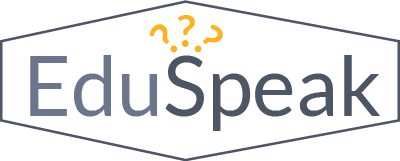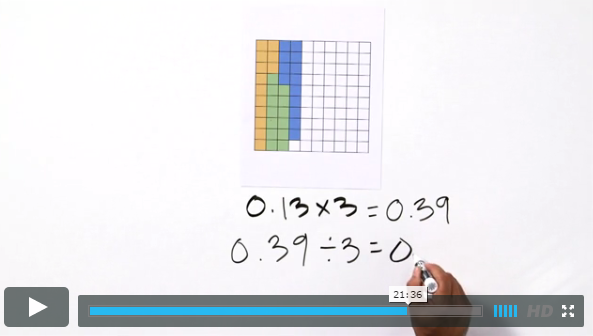by Holly Rola
Learning to multiply decimals is nothing new to 5th grade math classrooms, but with Common Core instruction, one key shift makes a big difference. That shift? Developing conceptual understanding.
Here’s how I learned to multiply 2.1 and 4.6 in the pre-Common Core era:

I learned to leave a space in the one’s place when I multiplied by the 4 and to move the decimal two places to the left in the final product, because there are two numbers to the right of the decimal places in the factors. But, why? Well, I wasn’t really sure. I just followed the steps.
With strong Common Core instruction, students are supported to develop conceptual understanding alongside the procedural skills and fluencies: they understand why the algorithm works. (Remember: conceptual understanding, procedural skills and fluency, and application are the three aspects of rigor, a key shift called for by the Common Core.) By balancing conceptual understanding with procedural skills when multiplying decimals, students can perform the operation fluently but also understand what they’re doing. And they’re developing number sense.
If you’re still unconvinced (or just want know why some Common Core math problems look so different), spend 3 minutes watching this video.
Building procedural skills from conceptual understanding
Ms. Caponigro is a 5th grade math teacher at McKinley Elementary School in Massachusetts. Watch how Ms. Caponigro helps her students build procedural skill from conceptual understanding:
Later in the lesson, Ms. Caponigro continues to help students build on the knowledge of place value:
Does this approach work?
On their ANet assessment, Ms. Caponigro’s 5th graders outperformed the network average by 19 points on Standard 5.NBT.7, which requires students to add, subtract, multiply and divide decimals.

In fact, one of the 5.NBT.7 questions on the ANet assessment asked students to solve 2.1 x 4.6.

Ms. Caponigro’s students, again, outperformed. Her students averaged 12 points higher than students across the country.

Cheers to Ms. Caponigro and her students! Their hard work to develop conceptual understanding alongside procedural skills is paying off.
Want to learn more about teaching conceptual understanding alongside procedural skill?
Check out EngageNY’s Math Studio Talk: Instruction for 5.NBT to see how students can build on their knowledge of the base ten place value sytem and use concrete models to understand mathematical operations. (Note: It’s a lengthy video. It’s worth the invesment, but if you want to skip ahead to instruction aligned to standard 5.NBT.7, it begins at minute 14:30.)
Visit LearnZillion.com and explore the instructional videos and lesson plans, including this 5.NBT.7 lesson plan to apply understanding of decimal multiplication using an area model. The lesson supports students to decompose decimals numbers to better understand and solve problems that require decimal multiplication, as shown in the lesson excerpt below.
If you’d like to see more 5.NBT.7 instruction in action, watch this classroom video from the Teaching Channel, where Ms. Poirer helps her students in Phoeniz, AZ add tenths and hundreths.
And, by the way, great Common Core math instruction will help students develop number sense across all grade levels and domains, not just when multiplying decimals.
Holly is the Analysis and Reporting Manager at ANet.





